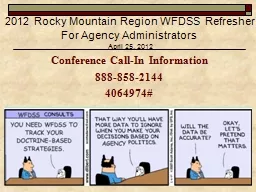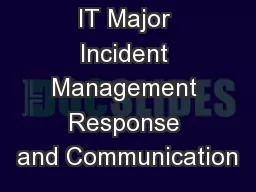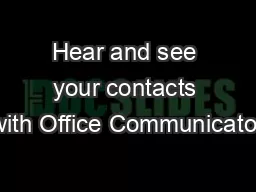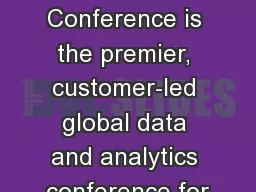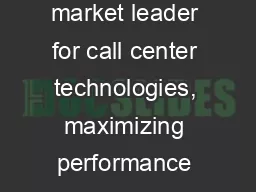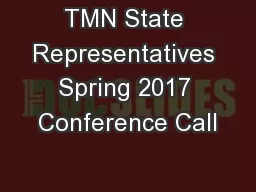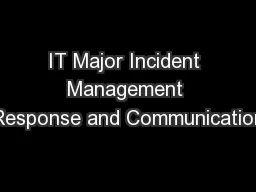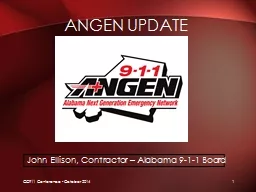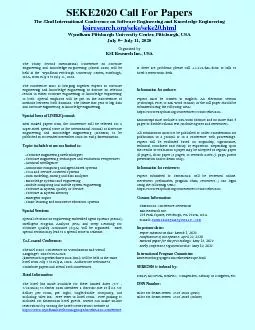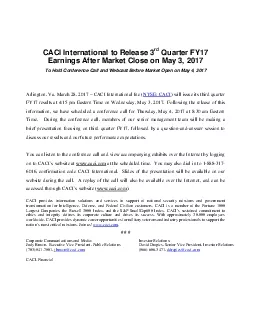PPT-Conference Call-In Information
Author : pamella-moone | Published Date : 2018-11-19
8888582144 4064974 2012 Rocky Mountain Region WFDSS Refresher For Agency Administrators April 25 2012 Webinar Objectives Provide Update on Policy Changes Provide
Presentation Embed Code
Download Presentation
Download Presentation The PPT/PDF document "Conference Call-In Information" is the property of its rightful owner. Permission is granted to download and print the materials on this website for personal, non-commercial use only, and to display it on your personal computer provided you do not modify the materials and that you retain all copyright notices contained in the materials. By downloading content from our website, you accept the terms of this agreement.
Conference Call-In Information: Transcript
Download Rules Of Document
"Conference Call-In Information"The content belongs to its owner. You may download and print it for personal use, without modification, and keep all copyright notices. By downloading, you agree to these terms.
Related Documents

